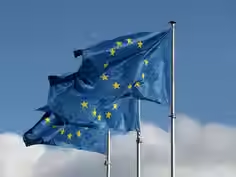OPEC+ Announces Third Consecutive Production Hike to Regain Market Control
- Rahaman Hadisur

- Jun 4, 2025
- 2 min read
Hadisur Rahman, JadeTimes Staff
H. Rahman is a Jadetimes news reporter covering Business

In a decisive move aimed at reasserting influence over the global oil market, the Organization of the Petroleum Exporting Countries and its allies (OPEC+) announced Saturday that it will increase crude oil production by 411,000 barrels per day in July marking the third consecutive monthly hike.
This aggressive production strategy follows similar increases in May and June and reflects a broader shift in OPEC+ strategy, from defending high prices to regaining market share. The decision is also seen as a response to quota violations by member nations such as Iraq and Kazakhstan, as well as a strategic maneuver by Saudi Arabia and its allies to undercut competition from U.S. shale producers.
Market Reaction Mixed Amid Geopolitical Tensions
Despite the headline increase in output, oil prices rose Sunday evening as geopolitical concerns took center stage. West Texas Intermediate (WTI) front-month futures rose over 2%, while equity futures saw modest declines: Dow Jones Industrial Average futures fell 0.28%, S&P 500 futures dropped 0.34%, and Nasdaq-100 futures declined 0.48%.
“Oil is trading as if it has just remembered that geopolitics exists,” noted Stephen Innes, managing partner at SPI Asset Management. Innes pointed to renewed concerns over Ukraine’s attacks on Russian infrastructure and heightened tensions in the Middle East. “It’s a balancing act between barrels and bombs.”
From Price Defense to Volume Play
The production ramp-up marks a stark reversal from earlier in 2024, when OPEC+ had cut output by 2.2 million barrels per day to support market stability. Beginning in April, the group started to gradually phase out those cuts. By May, production increases had tripled, signaling a shift to a volume-first strategy.
In a statement, OPEC+ reaffirmed its “commitment to market stability on current healthy oil market fundamentals and steady global economic outlook,” emphasizing that recent hikes aim to discipline quota violators and strengthen long-term control.
According to Innes, “The cartel, once laser-focused on price defense, has veered into volume-first territory, weaponizing barrels to discipline quota cheats, squeeze U.S. shale, and curry favor with Washington, all while dancing on the edge of its own fiscal cliff.”
Impact on U.S. Shale and Global Prices
The production increase could place added pressure on U.S. oil producers already grappling with higher drilling costs and subdued prices. Violeta Todorova, senior research analyst at Leverage Shares, warned last week that the cuts could push oil prices as much as 10% lower than current levels.
However, analysts at Jefferies noted on Sunday that the latest OPEC+ decision had largely been priced in by the market, and attention may now shift to other bullish indicators such as supply risks in Libya and Canada, or rising geopolitical tensions following an IAEA report on Iran's nuclear activity.
Oil Market Snapshot
Despite a slight dip on Friday, oil prices ended higher for the month of May. The July WTI crude contract closed at $60.79 per barrel, marking a 4.4% monthly gain, while global benchmark Brent crude for July delivery ended at $63.90, up 1.2%, according to Dow Jones Market Data.
OPEC+ will convene again on July 6 to determine production levels for August, a decision that may hinge on both market data and evolving global events.











































Comments